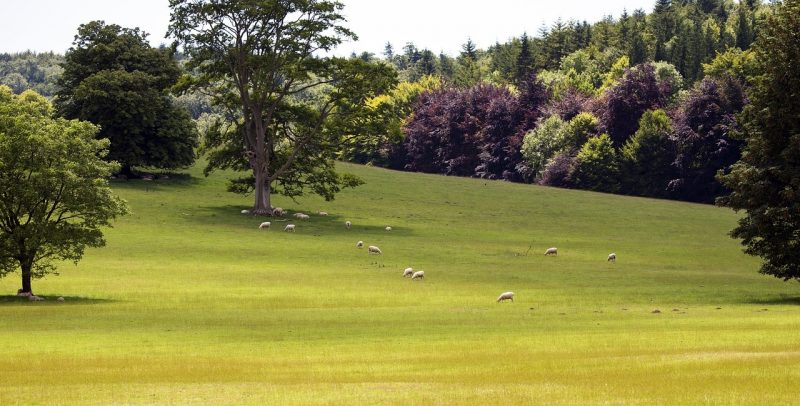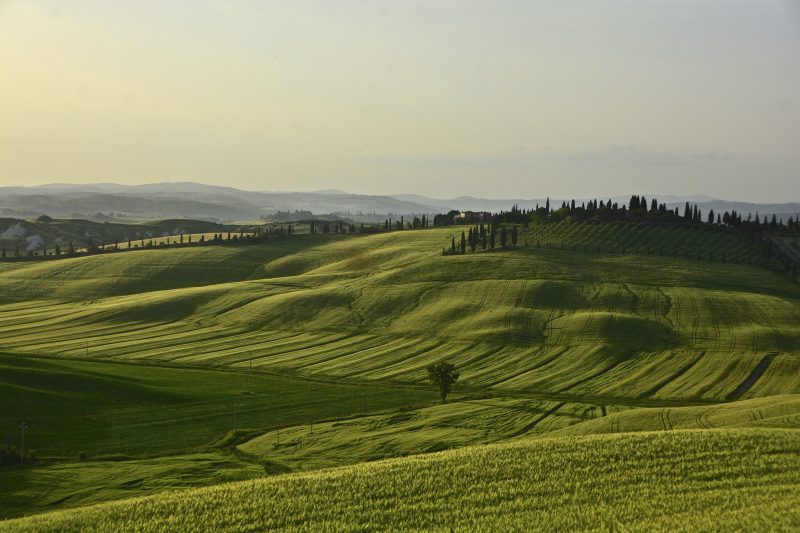A plain It is a type of relief that is characterized by presenting a notable flatness or slight undulations in the landscape. For example: the Pampean plain in Argentina or the Great Plains in the United States.
The plains are generally found between plateaus, in the valleys and below 200 meters above sea level, although it is also common to find plains in highlands.
The plains soils They tend to have great fertility, which is why they are used both for sowing grains and for grazing animals. They are also widely used land for the layout of roads or railways so they are places where populations settle.
Types of plains

Plains can be classified based on certain criteria:
1) According to the type of training they have:
- Structural plain. Surface that was not greatly modified by the erosion of wind, water, glaciers, lava, or by violent changes in the climate.
- Erosional plain. Surface that was eroded by water (wind or glaciers) during a certain period of time, forming a flat surface.
- Depositional plain. Plain that was formed by the deposition of sediments that were carried away by wind, waves or glaciers.
2) According to its characteristics:
- Lava plain. Plain that is formed by layers of volcanic lava.
- Coastal or littoral plain. Plain that is on the coast of a sea.
- Tidal plain. Plain that is formed when the soil has a large amount of clay or sandy sediments, making it easily flooded soils. They are plains that are almost always humid.
- Abyssal plain. Plain that forms at the bottom of an ocean basin, before a decline or abyss.
- Alluvial plain. Plain that contains one or more rivers and is therefore prone to flooding.
- Glacial plain. Plain that is generated by the movement of glaciers. Can be:
- Plain sandar or sandur. Glacial plain that is formed by small sediments. It generally draws a plain landscape with small branches of frozen rivers.
- Glacial plain of till. Plain formed by the accumulation of glacial sediments.
3) Depending on the climate or vegetation they have:
- Tundra plain. A treeless plain that is covered in lichen and moss and is mostly found in cold climates.
- Arid plain. Plain in which little rainfall occurs.
- Meadow. Plain in which there is more vegetation than in the tundra or in the arid plain, but, nevertheless, the rains continue being little.
Examples of plains

- Great European field. It is a type of eroded plain that covers much of the European territory, from the Pyrenees in the west to the Ural Mountains in the east, and is crossed by important rivers and lakes. It is made up of the Eastern European Plain and the North European Plain.
- Eastern European Plain. It is a plain that forms, together with the North European plain, the Great European Plain. It is located in the Eastern European area and encompasses the countries of Belarus, Estonia, Lithuania, Latvia, Kazakhstan, Poland, Russia, Ukraine, Romania, and Moldova.
- North european plain. It is a plain that is part of the Great European Plain and its limits are the Central European Highlands in the south and the North and Baltic Seas in the north. It crosses the countries of Germany, Holland, Denmark, Belgium, Poland and the Czech Republic.
- Pampas region. It is a great plain located in the center of Argentina, characterized by its temperate and humid climate. The fertility of its lands and its favorable climate made this area a suitable place for agricultural and livestock development.
- Dōgo Plain. It is a coastal plain located on islands in southern Japan that is crossed by several rivers.
- Valencian coastal plain. Is a lcoastal plain that extends to the east of Spain in the Valencian Community, on the coast of the Mediterranean Sea, and is the largest plain of the entire Spanish Mediterranean coast.
- Gulf Coastal Plain. Is a lcoastal plain that runs along the shores of the Gulf of Mexico (it is divided into the North Gulf Plain and the South Gulf Plain) and is crossed by numerous rivers, mountains and volcanoes.
- North China Plain. It is an extensive plain that is located in the northeast of China and is formed by the Yellow and Huai rivers. It is an area in which important cities such as Beijing are located and which has a great economic development due to its oil basins and agriculture.
- Amazon plain. It is a plain located in the Amazon River basin, which extends through Brazil, Venezuela, Colombia, Peru, Ecuador, Bolivia, Guyana, Suriname and French Guiana. Within this plain is the Amazon rainforest recognized for its biodiversity, a high level of rainfall and its high temperatures.
- Orinoco Plain. It is a plain that is located in the Orinoco river basin and covers a large part of the territory of Venezuela and eastern Colombia.
- Great Plains. It is a wide plain located in central North America on a plateau that extends from northern Mexico to northern Canada. It is characterized by being a region rich in hydrocarbons and with a great agricultural and livestock development.
- Chaco Pampean plain. It is a plain that extends across the South American continent in Argentina, Brazil, Uruguay, Paraguay and Bolivia and has areas of estuaries, lagoons and meanders.
- Plain of Tihama. It is an elongated plain that is located on the shores of the Red Sea on the Arabian peninsula. It extends over the territories of Saudi Arabia and Yemen.
- West Siberian Plain. It is a plain that is located in the western part of Siberia, in Russia, and is characterized by being a great depression.
- Wadden Sea. It is a plain located in the Netherlands, Germany and Denmark in the Wadden Sea and is the largest tidal plain in the world. It is recognized for its biodiversity, its islands and its excursions that arouse great tourist interest.
